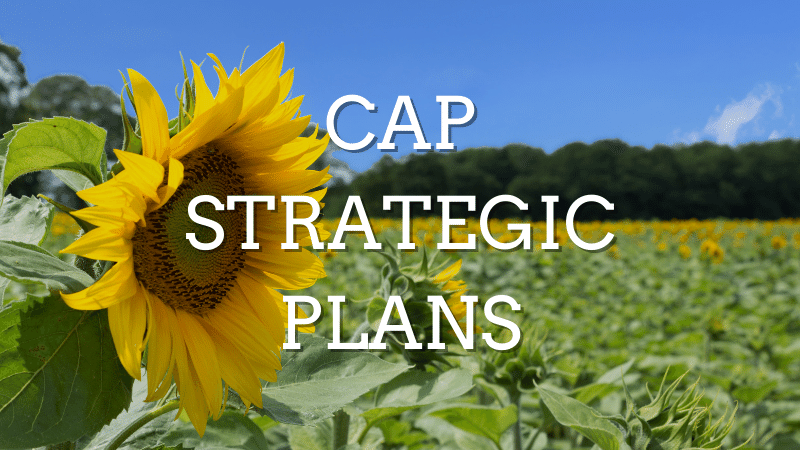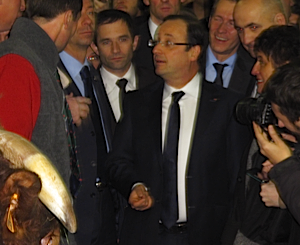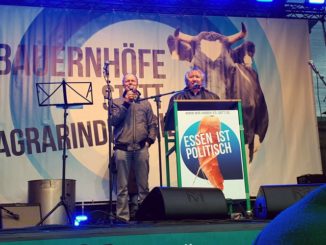Soaring grain prices, alongside gas, oil, fertilizers and pesticides, have sparked an unexpected debate on food production in the EU. A dependent and completely overexposed agricultural system has brought with it fear of food insecurity. In this article, we explore the tools that the commission is using to assess the potential of CAP Strategic Plans in reaching food security and propose our own analyses.
Introduction
On the premise of food insecurity, agri-lobbies, notably COPA & COGECA, have been pushing for extraordinary measures aimed at enhancing production of protein crops on fallow land and Ecological Focus Areas (EFAs). They have been calling for activating temporary market support from the crisis reserve funds (CMO) and a relaxation of agreed rules, like the conditionalities for direct payments (GAECs), which were already deviating from the objectives set in the Farm to Fork strategy.
This call was supported by a majority of AGRI Committee rapporteurs, represented in an open letter to Commissioner Wojciechowski by Norbert Lins, Chair of the Committee, who urges the Commission to “review the EU’s approach to food security, in order to reduce our dependence on imports and increase domestic production”. Monday 21st March saw Ministers also proposing to temporarily allow Member States, via implementing acts, to derogate from certain greening obligations in 2022 in order to enlarge the EU’s production capacity, while maintaining the full level of the greening payment.
The Commission has answered these demands. In a leaked communication on food security that will be published on March 23rd, it synthetizes and presents the pack of measures that will be implemented to answer the Ukraine crisis. Those include the proposition to make available E500 million in emergency aid from the crisis reserve to support farmers most affected (totalling up to E1,5 billion in emergency aid when including Member States top-ups) ; to allow Member States to derogate from certain greening obligations in 2022 in order to bring additional agricultural land into production ; to allow for increased levels of advances of direct payments later this year ; to encourage the use of the new CAP strategic plans to prioritise investments that reduce the dependency on gas, fuel and inputs (e.g. investments into sustainable biogas production, investments into precision farming, Support for carbon farming).
The European Parliament will also vote on a motion for resolution on food security, calling the Commission to review targets and timetable of the Farm to Fork and Biodiversity strategies in order to maximise production potential and calling to suspend advances on new legislative initiatives such as the revision of the Sustainable Use of Pesticides Directive.
All those demands and measures are being justified by the necessity for food security. But is the geo-political situation in Ukraine, as it unfolds, really endangering food security in Europe? And what should the Commission do in order to ensure long-term food security?
Food security in Europe
The EU is a net export or cereals with a self-sufficiency of 112%[1], 61% of EU cereals used for animal feed and only 23% directly reserved to food for humans[2]. The question, as it appears, is not really of food security but of the livestock industry’s continued interests, and their ability to maintain their competitive spot on the market.
A context that would create food insecurity is one of food shortages. But in the short term, as explained in a previous article, the unfolding crisis is one of prices, economic accessibility and unequal distribution. And even if the current situation in Ukraine unfolds in a way that would make it impossible to sow maize and sunflowers by mid-April and to harvest wheat in June/July, to compensate this loss by harvesting land for biodiversity would have limited impact. In a blog note, The Institute for Sustainable Development and International Relations (IDDRI) have explained that available areas are limited (less than 6Mha out of 100Mha of arable land), characterised by low yields and that increasing our production would also mean “using more mineral nitrogen, which is now massively imported from third countries (including Russia, Ukraine and Belarus, which account for nearly 20% of total nitrogen fertiliser exports) or produced in Europe with gas, the price of which is soaring.”
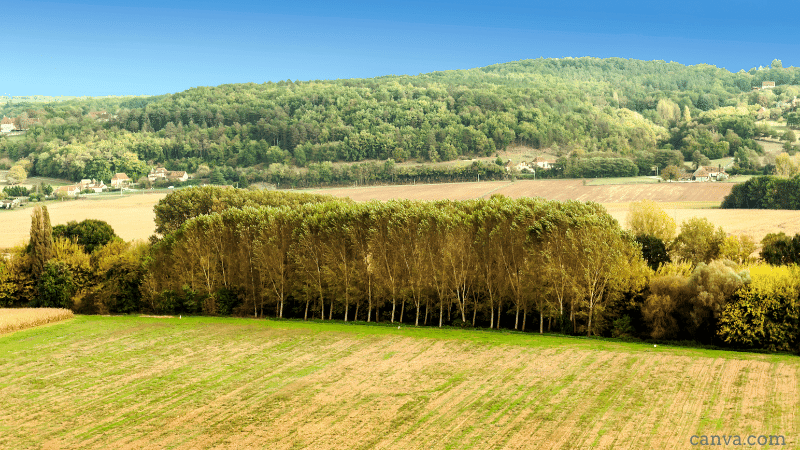
Short-term VS long-term strategies: agroecology for food security
In the short-term, there is a need for measures to stabilise prices and ensure food security in countries that really are at risk of shortages, such as Northern African and Middle Eastern countries, while also not jeopardising medium and long-term food security and social justice in rural areas. Those measures include the release of strategic stocks to the World-Food-Program, abolishing the use of biofuels, introducing measures to decrease food waste, working on minimum and maximum prices, reduce our meat consumption and more. But solutions that intend to modify environmental objectives in the CAP are not appropriate. The CAP is programmed for medium and long-term strategies and needs to frame trajectories for long-term food security.
In the long-term, taking even more land from nature, exacerbating our already immense impact on habitat fragmentation and biodiversity loss, destroying what is left of the ecological surroundings, in order to increase our crop production capacity is a dead end. As shown in the recently published and once again overlooked IPCC report, food security is threatened, not by a lack of animal feed, but by “the transformation of terrestrial and ocean/coastal ecosystems and loss of biodiversity, exacerbated by pollution, habitat fragmentation and land-use changes”. The scientific community is addressing a clear message to our political leaders, explaining that “public policies for transitions to resilient water and food systems enhance effectiveness and feasibility in ecosystem provisioning services, livelihoods, water and food security”.
Therefore, it is in our sense essential to do the exact opposite of what is asked by the agri-lobby and start transforming our agrarian systems into resilient, diversified, agroecological systems. And the Commission seems to agree as it included in its leaked communication for food security the need to support agroecological practices to ensure lasting food security. The agroecological transition scenario has been studied by many researchers and recently modelized by the Ten Years For Agroecology (TYFA) research team. In their work they show that a generalisation of agroecological practices can help build food security in Europe, while helping us reaching many of the objectives stated in the Farm to Fork and Biodiversity strategies, by knowingly reducing the calories produced by 35% with compared year 2010 but still maintaining export capacities. The agroecological transition requires, inter alia
- the phasing out of plant protein imports
- the phasing out of pesticides and synthetic fertilizers
- the redeployment of extensive grasslands
- the redeployment of landscape infrastructures to enhance biodiversity
Lessons must be learned from how exposed out agri-food system is, with its reliance of fertilizers, feeds and, in the final analysis, fossil fuels. The CAP is the perfect instrument to induce those medium and long-term changes, but has failed to do so until now.
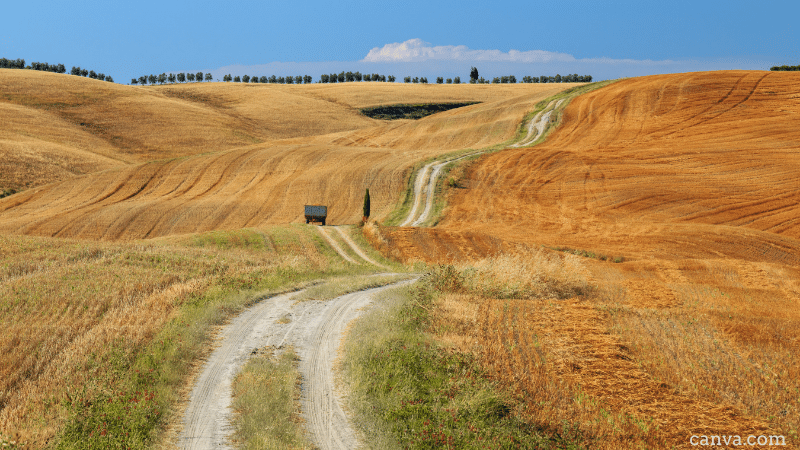
Will the commission efficiently assess the transitioning potential of CSPs?
With all plans now submitted, the ball is now in the Commission’s hands. Next step is the publication of the observation letters, expected by the end of March for the Member States who submitted on time. The Commission’s overview discussed on 21st March in the exchange of views with the Member States clearly demonstrates that a legal compliance check with the regulation cannot meet the needs and expectations of this reform, nor of the objectives of the European Green Deal. The lack of ex ante evaluations accompanying most of the submitted plans, and the poor considerations given from the Commission during the appraisal and approval phases, clearly demonstrate a shift: there has been a move from a politically charged ‘strategic, evidence-based approach’ to one suitable to maintain status-quo minimal adaptations or in some cases, clear regressions (see buffer strips, rotations, capping, coupled support).
In order for the Commission’s feedback to be effective, it must be thorough in its analyses, looking at the trade-offs of each policy decision with the status quo, and the tensions and synergies between measures. It also makes sense to analyse budget allocations and to compare Member State performance and ambitions, in order to inspire fairer and greener CSPs across Europe. But the recently released assessment of the CSPs by the commission, the goal of which was to feed the debates happening during the SCA meeting of March 14th and AgriFish Council meeting of March 21st, already shows the unwillingness of the Commission to produce useful and targeted analyses, which could show changes needed in the CSPs.
The assessment is more a descriptive exercise than a critical assessment. A core issue is that it is broad rather than specific – individual Member States aren’t named; overall numbers (clusters) of Member States and their proposals are instead given. The medium chosen is therefore more than questionable as it consists in a simple list of facts and statistics with no elaboration on inner workings of the measures. Nevertheless, this list allows us to potential serious shortcomings and failures. GAEC 2, which involves laying down the minimum standards for preserving wetlands and peatlands, sees 14 countries asking for a derogation. In other words an exemption for the rule altogether. Considering the fact that this is a brand new GAEC, one that was, from initial proposal in 2018, weakened for years before finally being agreed, it is obviously extremely disappointing that over half the Member States want an exemption from it. But which member states? And why? The document does not give this kind of concrete information that could fuel analyses for long-term trajectories towards economic and environmental sustainability.
It is interesting to note that those derogations on basic biodiversity and climate measures were asked for way before the Ukraine crisis came into the equation. Across Europe, Member States have shown very low environmental ambitions in their CSPs and the Commission, now showing hesitations on the Farm to Fork objectives, will have a hard time convincing them to upgrade their ambitions while doing the exact opposite in response to the Ukraine crisis.
That list of statistics and facts gives the illusion of actions being taken on every front by many Member States but eludes the details that determine the efficiency of the measures. It is essential that the commission publishes documents that show deep analyses of the Plans with comparisons and synergies between countries, in accordance with Green Deal objectives and asks the Member States, through the observation letters, to adapt their plans accordingly. The high subsidiarity of this CAP programming doesn’t mean that we shouldn’t strive for harmonisation by comparing specific country performance in order to elevate the ambitions where needed.
Assessment of the CSP’s potential for an agroecological transition
If we want to assess the transition potential of CSPs towards agroecological systems, in order to ensure food security in the long run, we have to look at the four needs for agroecology laid above, select measures that are impacting those needs and check if, among CSPs, those measures are sufficiently funded and coherent. For the exercise, we can select four measures, four issues presented in the commission’s assessment, all related to the four needs for agroecological transition, and check how different CSPs compare on those measure. That way, we can show what kind of analyses is needed for the observation letters.
| Needs | Measures | Commission’s Assessment | Questions induced |
| phasing out of pesticides and synthetic fertilizers | Funding Organic Production | « Almost all Member States express a growth ambition to a higher or lesser extent for organic farming, both in terms of increasing area farmed organically and in terms of area supported by the CAP » | · Are the Member States with the lowest area farmed organically investing enough to grow significantly?
· Are the specific measures attractive enough to induce farmers into transitioning? · How will the measures likely impact the achievement of member state and overall EU targets for organic farming? |
| phasing out of plant protein imports | Coupled Support for livestock | « Support is targeted on livestock (beef & veal, sheep meat and goatmeat, milk and milk products) with a budget share of approximately 70% of the overall budget CIS allocations in the Member States ; Limitations on stock density in the livestock sector are proposed at least in 2 Member States. » | · Which Member States do not put limitations or conditions for accessing coupled aid for livestock ?
· What share of Pillar I is allocated to those subsidies ? · How do those subsidies compare to other measures intended to increase attraction for production on permanent grassland with low stock density ? |
| redeployment of extensive grasslands | Eco-schemes funding the development of permanent grassland | « The Eco-scheme practices proposed include inter alia soil conservation, preserving landscape features and non – productive areas, carbon farming, integrated pest management (IPM) and pesticides management, permanent pastures – extensification and maintenance, biodiversity, animal welfare, and nutrient management. » | · What share of the budget is allocated to those practices ?
· Are the conditions of access to those Eco-schemes ambitious enough ? Do they clearly improve the minimum required by GAECs ? · How are these practices distributed among Member States ? |
| redeployment of landscape infrastructures to enhance biodiversity | Eco-schemes funding biodiversity inducing practices | ||
| Transversal measures for biodiversity and climate | « The minimum ring-fencing requirement for environment and climate is planned in all submitted plans but one, with 10 MS planning around 50% of the EAFRD allocation for green interventions and one MS planning a share of 81% »
|
· In the calculation established by article 93 of regulation 2021/2115, the share of budget under pillar II allocated to environmental and climate objectives can include investments in agri-envrionment-climate measures (AECMs), measures for areas with specific constraints and disadvantages, but also investments broadly related to objectives such as promoting sustainable energies. Is the budget fairly distributed between those objectives ? |
Table 1 : Commission’s assessment compared to the needs for an agroecological transition
In order to answer those questions, we will look at four countries (France, Germany, Spain and Italy) and target some recommendations that should be integrated in the observation letters. The table below shows the measures (Organic Funding; Eco-schemes funding the development of permanent grassland; Coupled support for livestock; Eco-schemes funding biodiversity inducing practices; Budget dedicated to AECMs) and budgets found in those four countries’ CSPs. In order to assess the potential of the Eco-schemes proposed (i.e. if they are deemed likely to deliver on promises and ambitious enough compared to GAEC standards), we’ve followed the classification made by WWF, EEB and Birdlife International in their assessment of Eco-scheme’s quality with good or promising Eco-schemes in green and poor, with requirements that would sometimes fit better in CAP conditionality, in red. Neutral are in yellow.
| Funding Organic Production | Eco-schemes funding the development of permanent grassland
Coupled Support for livestock |
Eco-schemes funding biodiversity inducing practices | Transversal measures for biodiversity and climate : AECM Budget in Pillar II | |
| France | Pillar I : Certification Eco-scheme (distribution of budget not specified) Pillar II : 9,8% of P2Agricultural Area under organic production : 7,7%[3] |
Eco-scheme 1 : agroecological management of agricultural areas – maintaining 80 to 90% of permanent grassland without tilling (distribution of budget not specified) Coupled Support Cattle : limited to 120 heads and 1,4 x feed area (Coupled Support Total budget is 15% of P1) |
Eco-scheme 3 : biodiversity and agricultural landscape Eco-scheme 4 : sustainable hedges (distribution of budget not specified) |
With Organic : 19,6% Without Organic : 9,8% Transfer PI-PII : 7,5% |
| Germany | Pillar I : Eco-scheme : Management of arable or permanent crop areas of the holding without the use of synthetic chemical pesticides (14% of Eco-scheme budget) Pillar II : 21% of P2Agricultural Area under organic production : 9,7% |
Eco-scheme 4 : extensification of all permanent grassland (20,5% of Eco-scheme budget)
Coupled Support Cattle : on permanent grassland, no limit in density, unclear rules. (1% of P1)
|
Eco-scheme 1 : Provision of land for biodiversity enhancement and habitat conservation (32,5% of Eco-scheme budget) Eco-scheme 3 : Maintaining agroforestry management on arable land and permanent grassland (0,75% of Eco-scheme budget) Eco-scheme 5 : Result-oriented extensive management of permanent grassland with evidence of at least four regional species (15,25% of Eco-scheme budget) |
With Organic : 26% Without Organic : 5% Transfer PI-PII : 10-15% |
| Spain | Pillar II : 9% of P2
Agricultural Area under organic production : 9,7% |
Eco-scheme 1,2 : practice 1 : Extensive herding (part of 18,2% of Eco-scheme budget)
|
Eco-scheme 1,2 : practice 2 : biodiversity spaces in wetlands (part of 18,2% of Eco-scheme budget) Eco-scheme 9 : biodiversity zones on arable and permanent cropland (11% of Eco-scheme budget)
|
With Organic : 16% Without Organic : 7% Transfer PI-PII : none |
| Italy | Pillar II : 15% of P2
Agricultural Area under organic production : 15,2% |
Eco-scheme 1 : Animal welfare (level 2 : grazing): between 1 and 4 months of grazing per year. (part of 43% of Eco-scheme budget) Coupled Support Livestock : unclear requirements. (6% of P1) |
Eco-scheme 5 : measures for pollinators (5% of Eco-scheme budget)
|
With Organic : 28% Without Organic : 14% Transfer PI-PII : 3,5% |
Table 2 : Short assessment of the CSP’s potential for an agroecological transition
On organic production
We should start by mentioning that all countries are far from investing enough to reach the European Organic Action Plan objective of 25% of agricultural areas farmed organically by 2030. With this CAP programming ending in 2028, Member Stated should invest massively toward this goal. In their evaluation of support for organic farming in the draft CSPs, IFOAM has demonstrated that Member States either set targets that are too low to fairly contribute to the European target of 25%, either allocated budgets that are too low to support the intended targets. Overall, France, Germany and Spain have reduced the levels of payment compared to the 2014-2022 period. This goes against the no-backsliding principle set out in Regulation (EU)2021/2115 on CSPs, Article 105.
Germany explained in its CSP that the plan will support 14% of areas under organic production and national initiatives will provide for the rest, their national goal being 30% of agricultural area under organic production by 2030. If around 14% of Eco-scheme budget and 21% of Pillar II budget can get them to only 14% of areas farmed organically, we can be sure that Spain and Italy will never reach their target of 25% of agricultural area under organic production. Moreover, in Germany and Spain, restricted access to Eco-schemes and Rural Development measures for organic farmers induces a lack of comparative advantages for organic farming.
France, which doesn’t detail the repartition of most of its budget between the different Eco-schemes, seems to be as hopeless. It’s Certification Eco-scheme, which will replaces the budget for maintaining organic areas previously financed under Pillar II, has many flaws. It will give the same subsidies to farms under the Organic Label as the ones under the High Environmental Value (HEV) Label, the latter being based on less ambitious standards. The HEV label, functioning with a point scale system, gives the opportunity to farmers to balance the effort between reducing chemical input, setting land aside for biodiversity and efficiently irrigating crops. That way, it is possible for the farmers to reach the minimum amount of points while still using pesticides and fertilizers on some production areas. This goes against basic logic of offering rewards in proportion with effort made and will reduce the funds available for organic farming.
All four Member States should invest more in organic production in order to reach an average of 25% of European agricultural areas farmed organically. It is essential that all countries increase organic financing with compared 2014-2022 CAP and respects the no-backsliding rule. Access to Eco-schemes should be rewarded proportionally to efforts made by farmers. In countries like Spain and Italy, the commission could ask to finance it through increased transfers, which are for now, if not inexistent, very low, from direct payments under Pillar I to organic funding under Pillar II. In France, it should ask to create a separated level of recognition for organic farming in its Certification Eco-scheme.
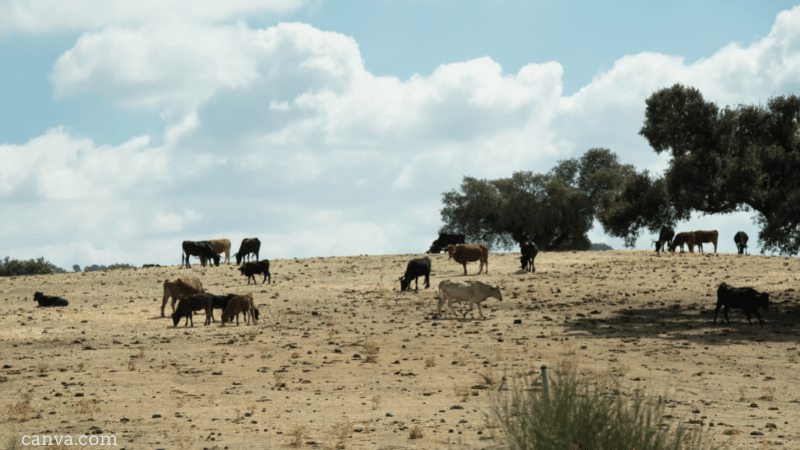
On developing livestock breeding on permanent grassland and reaching feed autonomy
All four Member States have included an Eco-scheme subsidising permanent grassland. But contrary to what is implied by the Commission’s assessment, all of them do not provide for an ambitious and effective one. In Italy, the Eco-scheme is funded with 43% of the total Eco-scheme budget but is mainly used, on its first level, to reduce antimicrobial use, with the minimum grazing requirements only included as a bonus. For some farms, this second level of subsidy can be reached by introducing only one month of grazing with no herd density specified. Seeing that 43% of the Eco-scheme budget is allocated to such an unambitious measure is worrying and looks more like a disguised subsidy dedicated to intensive livestock breeding.
In Spain, the required minimum time and period for grazing is very easy to meet and could in the end promote semi-intensive breeding. In France, the Eco-scheme is only restricting tillage on permanent grassland but does not specify any limits on herd density. Ecological equilibrium on permanent grassland, from which depends its capacity to stock carbon, requires a limit on organic nitrogen input. Therefore, and depending on regional grassland characteristic, it is estimated that 0,5 to 2 head per hectare should be indicated as maximum livestock density.
When we talk about livestock breeding, we also have to look at coupled income. In most European countries, livestock farmers have the lowest revenues of all. It is therefore no surprise that 70% of all coupled support among Member States will be distributed to livestock, mostly cattle farmers. The difficulties endured by those producers come mainly from a lack of autonomy in feed. The Ukraine crisis exemplifies this phenomena like no other. If it seems logical to help those producers on the short term, all support provided should be accompanied by obligations that should, on the long run, increase feed autonomy.
The commission should ask for minimum standards in herd density, time spent grazing and use of local feed for all Eco-schemes and all coupled support for livestock. To go further, the Commission should encourage measures that aim to produce more protein crops locally. Only 1% of European agricultural lands are used to produce protein crops for feed[4]. This is the result of trade agreements with the US that should be renegotiated as soon as possible. When reducing herd sizes and overall meat consumption, producing more protein crops in Europe does not imply the necessity of using fallow land and EFAs.
On measures for biodiversity and transversal measure for biodiversity and climate
Measures for biodiversity can be broad, but mostly, they consist in giving space for nature to develop and encouraging farming practices that include a diversification of species used in combination or rotation, without chemical inputs and with soil conservation methods. Increasing biodiversity, which is an objective in itself, is also essential for reaching other environmental objectives as healthy ecological systems provide numerous services. For example, a healthy soil, with rich microorganism activity, can stock more carbon and retain nitrates longer and in bigger quantities. It is therefore unacceptable that Italy allocated only 5% of its Eco-scheme budget to biodiversity measures. Italy seems to have used the Eco-scheme architecture as a coupled support system. For example, 17% of the Eco-scheme budget reserved for olive groves contain no real climate and biodiversity commitments.
In the Commission’s assessment of the plans, we read that the minimum requirement for environment and climate (35% of Pillar II) is met by all Member States. But when dissecting the calculation, and subtracting budget for organic farming, the budget dedicated to AECMs ranges from 5% only in Germany to 14% in Italy.
As a minimum, the commission should require all Member States to respect all GAECs in their entirety. It should then ask for all Eco-schemes to integrate more ambitious standards for inducing biodiversity in productive areas but also obligations to set aside shares of land for enhancing biodiversity only. In pillar II, a bigger share of the budget should be dedicated to AECMs. Requirements going above GAEC standards should also at least be obligatory in all agricultural areas with natural constraints as they receive a big share of Pillar II budget.
Conclusions
The Ukraine crisis should not be an excuse to once again postpone the urgent need for transitioning our agrarian systems towards environmentally resilient systems. It should instead be the catalyst for change.
In that sense, the job of the commission, when writing the observation letters, should be to assess measures proposed by Member States and check if the efforts that are asked to receive subsidies are sufficient to reach Green Deal objectives. Respecting all GAECs shouldn’t be negotiable and all Eco-schemes should require practices that go above those with ambitious conditions of access. Organic production should be rewarded accordingly to the results that it achieves and organic farmers should be able to have access to other Rural Development measures. More budget in Pillar II should be dedicated to AECMs directly and Member States should transfer Pillar I budget in order to finance it.
During the whole CAP programming, there will be different opportunities, such as the mid-term review based on annual reports from Member States, to increase the level of ambition of the CSPs. All those opportunities should be used to increase CSPs ambitions in creating economically, socially and environmentally resilient agrarian systems.
[1] https://www.arc2020.eu/more-food-less-feed-agriculture-and-the-war-on-ukraine/
[2] https://ec.europa.eu/info/sites/default/files/food-farming-fisheries/farming/documents/short-term-outlook-statistical-annex_en.pdf
[3] https://www.organicseurope.bio/about-us/organic-in-europe/
[4] Demain, une europe agroécologique, 2021, Xavier Poux et Pierre-Marie Aubert
Download this article as a PDF
 This article is produced in cooperation with the
This article is produced in cooperation with the
Heinrich Böll Stiftung European Union.
More on CAP Strategic Plans
French CAP Plan: What Opportunities for Change During the New 2022-27 Presidential Term?
CAP, Fairness and the Merits of a Unique Beneficiary Code – Matteo Metta on Ireland’s Draft Plan
ARC Launches New Report on CAP as Member States Submit Strategic Plans
Slashing Space for Nature? Ireland Backsliding on CAP basics
Quality Schemes – Who Benefits? Central America, Coffee and the EU
Civil Society Organisations Demand Open and Ambitious Approval of CAP Plans
CAP Strategic Plans: Germany Taking Steps in the Right Direction?
CAP Strategic Plans: Support to High-Nature-Value Farming in Bulgaria
Commission’s Recommendations to CAP Strategic Plans: Glitters or Gold?
German Environment Ministry Proposals For CAP Green Architecture
CAP Performance Monitoring and Evaluation Framework – EP Position
A Rural Proofed CAP post 2020? – Analysis of the European Parliament’s Position
CAP Beyond the EU: The Case of Honduran Banana Supply Chains
CAP | Parliament’s Political Groups Make Moves as Committee System Breaks Down
CAP & the Global South: National Strategic Plans – a Step Backwards?
CAP Strategic Plans on Climate, Environment – Ever Decreasing Circles
European Green Deal | Revving Up For CAP Reform, Or More Hot Air?
Climate and environmentally ambitious CAP Strategic Plans: Based on what exactly?
How Transparent and Inclusive is the Design Process of the National CAP Strategic Plans?

